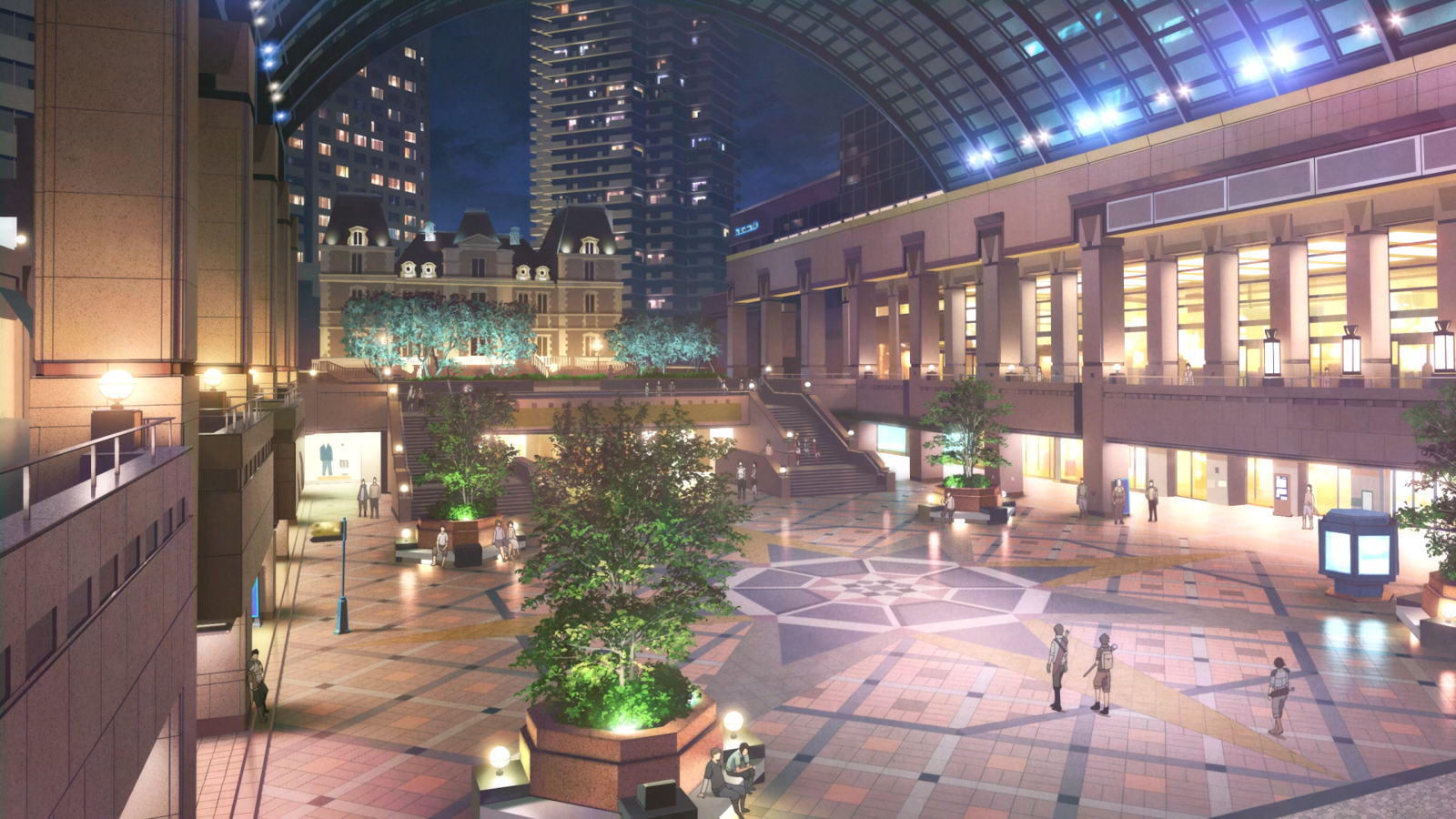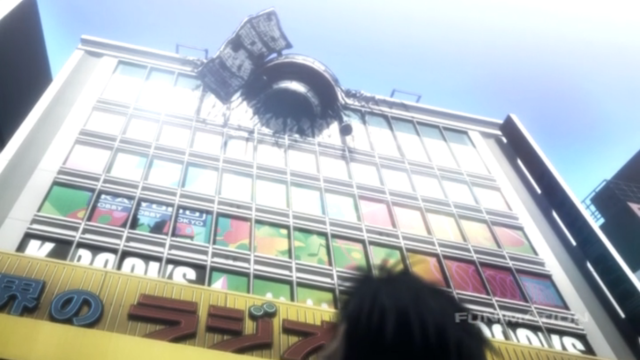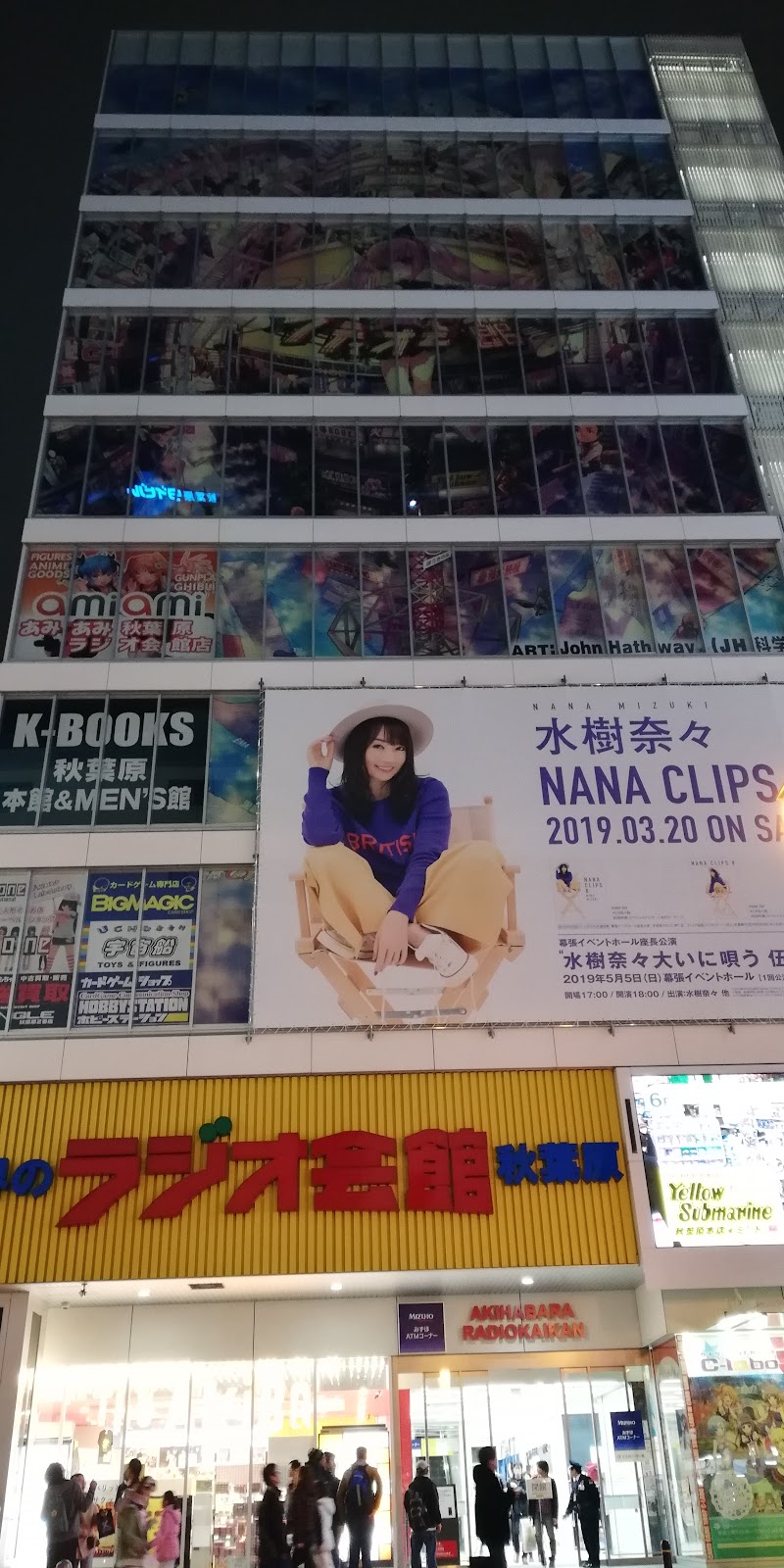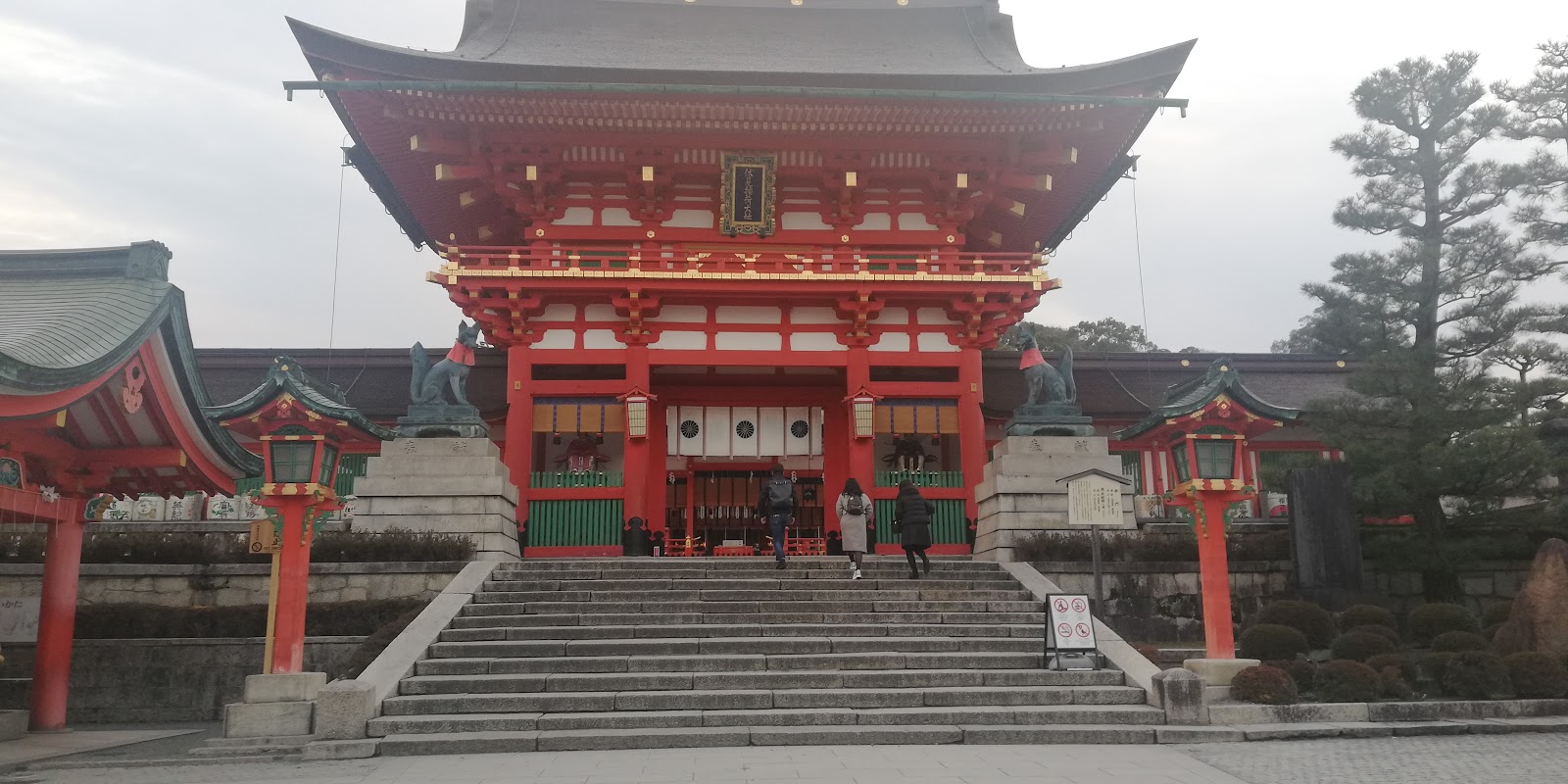10 Sure Win & Easy Otaku Pilgrimage Spots in Tokyo You Must Visit
For many anime and manga fans, a trip to Japan is right up there in their respective bucket lists. While some manage to save enough money to get a tourist visa and make it to the land of their dreams, others get lucky and are brought along with family or even flown in for a business trip. In these kinds of situations, planning out a pilgrimage to real-world locations, or “sacred spots,” featured in anime tend to get tricky. A dedicated otaku could make up some excuse to separate him/herself from the herd, but again it gets troublesome (mendokse) especially when said otaku is the less social type.To help out first timers who just want to get their feet wet, and also those with non-anime fan companions, here are 10 accessible “sacred spots” to visit which are also close to regular tourist spots that “normies” may enjoy.Let’s kick things off with locations from Makoto Shinkai’s works who is currently one of the more prominent names in recent anime history since the overwhelming success of “Kimi no Na wa (君の名は, Your Name.).” His two films “Kimi no Na wa” and “Garden of Words,” were mostly based in a realistic world, minus the supernatural incidents of the former, so simply heading over to Shinjuku Gyoen National Garden can write off three items on the list.

















More than just a place for purchasing and being immersed in anime-related goods, Akihabara is also known as Tokyo’s “electric town.” All kinds of electronics, gadgets, retro consoles, parts, and some really old stuff can be found in the various stores housed in the area and mixed in with anime goods. If shopping for electronics is your thing, this is the place to go.
 Steins;Gate
Steins;Gate








The last stop for this beginner’s anime pilgrimage is Akihabara itself. Sword Art Online Ordinal Scale transformed a less crowded part of Akiba into a battleground where Augma players battled the 10th floor boss Kagachi the Samurai Lord. Yuna also appeared on scene to give all the players a boost with an impromptu concert.

 Sword Art Online Ordinal Scale
Sword Art Online Ordinal Scale



About the Author
- Shinanomachi Overpass (Kimi no Na wa/Your Name.)
The first stop will be Shinomachi Station. Since this is one stop away from Sendagaya Station, where you’ll get off and walk to Shinjuku Gyoen if coming from the direction of Akihabara, it makes sense to make a quick stop just to visit the overpass where Taki spent his time thinking about Mitsuha after his date with Okudera senpai. Since the overpass doesn’t get much foot traffic, it’s easy to get a shot without any other pedestrian sharing the space.
Even as a solo traveler, I was able to get this solo shot with a timed smartphone on a selfie stick, lodged securely on the handrails. When you travel alone, you learn to get creative.
After a quick photo op, it’s back to the train and on to Sendagaya Station. Once there, it’s just a short walk to the Sendagaya gate of Shinjuku Gyoen where visitors will need to pay a 500 yen admission fee.
Shinjuku Gyoen is a popular tourist spot even for locals because of the garden’s size and its collection of flora, so it’s an easy excuse to visit while secretly hunting for anime pilgrimage spots. Spring for sakura season and autumn are the best times to visit the garden to see lines of beautiful sakura trees in bloom while people have picnics around them. Autumn will showcase a sea of colors as the leaves transform with the season to prepare for winter.
II. Shinjuku Gyoen (Garden of Words)
For the anime fan, your goal in Shinjuku Gyoen is the lone shed where Takao and Yukari meet one rainy day in Shinakai’s “Garden of Words.” The shed holds great significance to the two characters because it becomes their oasis from the daily grind of life where they socialize and form a bond with each other.
You can find the shed in the Japanese garden area of Shinjuku Gyoen. It will be surrounded by ponds and the view from the benches under the shed is also quite beautiful. However, since Shinjuku Gyoen sees a lot of foot traffic, it won’t be unusual to see people sitting on the bench either hanging out or just resting their feet. I had to wait on the side for around 15-20 minutes for people to clear out and create a window of only a few dozen seconds to get a snapshot of just the shed and the surrounding foliage.
III. Kimi no Na wa Staircase
Once you’ve had your fill of nature, it’s off to the next iconic spot from “Kimi no Na wa.” While the first two stops were relatively easy, getting to the “Kimi ni Na wa stairs” will require some leg-work into a residential area. From Shinjuku Gyoen, you have to exit through the Shinjuku gate which is on the other side of the park opposite of the Sendagaya gate. From there you walk to the Shinjuku-Gyoemmae station Marunochi line and take the train one stop to Yotsuya Sanchome.
From here on out it will be around a 15- to 20-minute casual walk to the stairs of fate where Taki and Mitsuha find each other at the end of the movie. Walking through a quiet Japanese neighborhood to experience what it’s like would be a good excuse to convince some non-anime fans to come along. Furthermore, the stairs have gained such a reputation that it even has its own Google Maps marker. The locals are also aware of the tourist fans of “Kimi no Na wa” taking time to visit and take pictures at the spot.
As an added bonus, anime pilgrims and tourists can also check out the very traditional-looking Yotsuya Suga Shrine just beside it to mix some traditional culture with pop culture.
IV. Shibuya Scramble Crossing (Multiple Anime)
Next on the list is the world renowned Shibuya Scramble Crossing. Due to its popularity, the intersection has appeared in several anime productions such as Netflix’s Ultraman, Tokyo Ghoul, and Mamoru Hosoda’s film The Boy and The Beast. The crossing was also featured in the anime and mobile game for IdolM@ster Cinderella Girls.
IdolM@ster Cinderella Girls: Starlight Stage
Tokyo Ghoul
Ultraman (Netflix)
Getting there is easy. Just hop on a the train then get off at Shibuya station. Make sure to exit at the Hachiko gate. Since this is a common sightseeing spot, and a place where locals frequently pass through, a crowd is to be expected. Not to mention it’s just beside best boy Hachiko’s statue. The Starbucks branch overlooking the crossing also gets filled up quick so best to find a spot early to beat other tourists.
V. Yebisu Garden Place (Sword Art Online Ordinal Scale)
Just one train stop away near Ebisu Station is the Yebisu Garden Place which has been described as a sort of “city within a city.” It’s chock-full of stores and restaurants, plus the Museum of Yebisu Beer. The area used to be the site of a beer brewery for the still existing brand Yebisu Beer, hence the beer museum. Bit of trivia: “Ebisu” is simply the modern way to write “Yebisu.”
“Sword Art Online” will recognize Yebisu Garden Place as the area where 12th floor boss The Strict Hermit and 91st floor Dorz’l the Chaos Drake appeared during a fight sequence in the film “SAO Ordinal Scale” as augmented reality monsters only seen through the Augma AR headsets. Augmented reality as we know today is still far from what’s been developed in the film, but It’d still be pretty cool to fight a huge ass floor boss in one of Tokyo’s tourist spots.
Sword Art Online Ordinal Scale
VI. Ikebukuro (Durarara!!!)
Moving on to the second half of this list, we head over to Ikebukuro where much of the “Durarara!!!” series was set in. Fans of the show could probably imagine seeing Celty riding down the road on her jet black bike/horse doing one of her usual delivery runs, or Shizuo sending a vending machine hurtling through the air across the Ikebukuro main shopping street.
Durarara!!!
Apart from the anime significance, regular tourists could enjoy Ikebukuro as a good place to shop. Within the area is the prominent Seibu department store, the BiC Camera electronic department for photography needs, and more. Ikebukuro also tend to be less crowded compared to Shibuya, Shinjuku, and Akihabara so there’s a bit more elbow room to shop at leisure.
By Athena Lam (The Cup and The Road)
Another fun fact about Ikebukuro is its reputation as the Akihabara for girls. Wandering around the anime-related stores in the vicinity, I was surprised to find a lot of BL (boys’ love) related merchandise. There are also numerous cosplay stores scattered around the area. Furthermore, if maid cafes dot the Akiba landscape, Ikebukuro has the famous Swallowtail butler cafe for catering to ladies’ fantasies. Check out TheCosplayChronicle's First-Hand experience at the famed Cafe here.
Swallowtail Butler Cafe (@swallowtail_bc)
Finally we head over to the mecca, the holy land for anime fans, Akihabara where the last three sacred spots are located. It’s really hard to miss the place because you’ll immediately be bombarded with various anime signs which have been put up on the sides of buildings lining it’s main avenue. There will also be numerous “meido” handing out flyers and waving at passersby to invite them to their shop. Visiting one should be a good experience to have whether you’re an anime fan or not.
More than just a place for purchasing and being immersed in anime-related goods, Akihabara is also known as Tokyo’s “electric town.” All kinds of electronics, gadgets, retro consoles, parts, and some really old stuff can be found in the various stores housed in the area and mixed in with anime goods. If shopping for electronics is your thing, this is the place to go.
VII. Radio Kaikan (Steins;Gate)
The first sacred spot to see after going out of Akihabara station would be the Radio Kaikan building featured in “Steins;Gate.” The building has changed much since the original game was released in 2009 and the anime adaptation aired in 2010. In 2011 the building hung a replica of the “Steins;Gate” time machine as it was seen in the show and game.
Pre-renovation Radio Kaikan - Wiki Commons
By now, not only has the time machine been removed, the building itself has gone through a modernizing renovation which added a couple more floors on top and gave it a more streamlined outer appearance. The store used to sell all sorts of electronic parts and devices before the rise of anime popularity, hence the name. Nowadays, it caters to anime otaku culture where a wide selection of anime paraphernalia can be bought, from figures to character goods.
VIII. Akiba UDX Building (Love Live!)
Love Live!
Love Live fans can relieve the time Honoka first became aware of school idols at the Akiba UDX building and its large screen display which overlooks the pedestrian walkway. The show depicted the building as the UTX Academy high school campus. In reality the UDX is a multi-purpose complex filled with various establishments, event spaces, restaurants, and even an open college. Love Live fans may spot each other taking photos of the screen and the walkway. Just be mindful of other pedestrians.
By Manga.Tokyo
IX. Kanda Myojin Shrine (Love Live!)
Love Live!
Another Love Live sacred spot is literally a sacred place which is the Kanda Myojin Shrine where Nozomi worked as a miko (shrine maiden). Word of caution, though it would be tempting to take photos of the mikos on duty, this is generally discouraged much like in other major shrines around the country which receive a lot of foot traffic. Apart from the novelty of seeing real-life mikos, some of them truly are quite pretty in their traditional garments.
Anime Tourism Association
As a bonus, the stairs where Honoka and the rest of the μ's ("muse") members trained at is just at the eastern side of the shrine complex.
By Manga.Tokyo
X. Akihabara (Sword Art Online Ordinal Scale)
The last stop for this beginner’s anime pilgrimage is Akihabara itself. Sword Art Online Ordinal Scale transformed a less crowded part of Akiba into a battleground where Augma players battled the 10th floor boss Kagachi the Samurai Lord. Yuna also appeared on scene to give all the players a boost with an impromptu concert.
Sword Art Online Ordinal Scale
Based on this bossfight time limit counter, the fight took place somewhere around the UDX building.
Pinned on the Google Maps screenshot is the McDonald’s branch near where Asuna and Kirito arrived at to meet with other Augma players. The encircled space is the estimated area where the boss fight occurred.
By Otashift
Now that you’ve got a taste of doing an anime pilgrimage, and somewhat discreetly with non-anime fan traveling companions, there are literally thousands of nooks and crannies left to discover. According to a 2016 created by DIC Corporation, there are over 5000 sacred spots scattered all over Japan. Most of these are right in Tokyo which had 1,712 locations as of Nov. 22, 2016. With the release of more recent shows, this number likely has gone up. Unfortunately, the Japanese website dedicated for this list, Seichi Junrei Map, is no longer updated.
On the other hand, the Japanese have been ramping up their promotion of anime for tourism. The Anime Tourism Association actively maintains a website dedicated to listing down the latest and most popular pilgrimage sites for anime fans. Unlike Seichi Junrei Map, the Anime Tourism site has an English version to better inform international visitors on where to go. The 2019 list update added 88 more pilgrimage sites to their list which included sacred spots for more recent hit titles such as “A Place Further Than the Universe” and “Laid Back Camp.”
At the end of the day, it’s up to you anime pilgrim to choose which sacred spots to visit based on which anime you’re most passionate about. With thousands of places to potentially visit, it would be exceedingly expensive and quite tiring to go to them all when the show the area was featured in did not even strike a chord in your otaku kokoro.
Honorable Mention
If you do decide to head for Kyoto, one of its most prominent tourist spots also happen to be another anime pilgrimage spot, the Fushimi Inari Shrine which gets featured in “Inari, Konkon, Koi Iroha.” Whether an anime fan or not, the shrine is worth the visit. For a more serene experience, go to the shrine before 8 AM to get ahead of the crowds. By the time you get down from the mountain path, shops would have opened at the entrance and you may get to see people in kimono depending on when in the year you visited. The mikos will also be around selling charms and fortune readings to visitors but again no pictures allowed.
About the Author

|
Alfred loves C.C., 2B, Scathach, anime, kendo, martial arts, and photography. He’s a member of Philippine-based lightsaber dueling group Vis Eterna and juggles multiple gacha hell games on three smartphones and his PC.
|
|---|




Comments